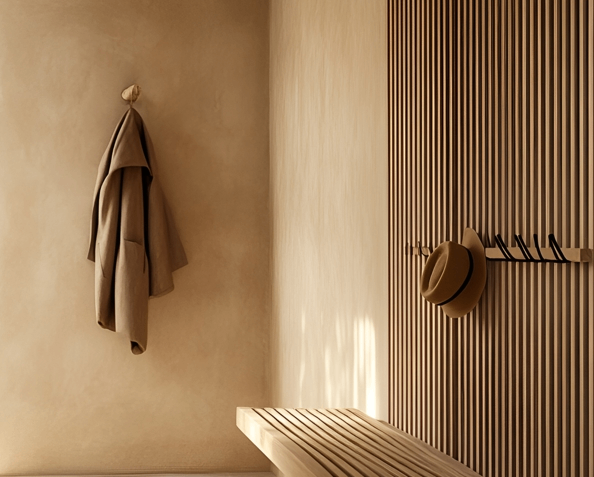This revolutionary new building material not only completely overturns the traditional wall decoration model but also injects new vitality into modern home and architectural spaces with its core advantages such as green environmental protection, excellent performance, and convenient installation. From the perspective of macro-industrial transformation, this growth trend is the result of the joint action of stricter global environmental protection policies and the awakening of consumers' health awareness. As a typical sustainable development material, WPC wall cladding precisely meets the urgent market demand for "green decoration".
Image Source:699pic
The unique material formulation design is essentially an innovative practice of resource recycling. The extensive use of natural plant fibers not only reduces the dependence on wood and eases the pressure on forest resource protection but also converts agricultural waste into high-value-added products. The addition of thermoplastic plastics endows the material with characteristics such as strong plasticity, water resistance, and moisture resistance.
The diversified product system of WPC wall cladding precisely covers various application scenarios. In the field of interior decoration, its surface treatment technology has reached the leading level in the industry: the surface roughness of smooth panels is Ra≤0.8μm, and the anti-fouling ability is increased by 40%; embossed panels can replicate more than 98% of the natural wood texture through 3D digital carving technology; film-covered panels use imported German polymer films, with a scratch resistance level of 4H and a color retention duration of up to 15 years.
WPC wall cladding achieves a balance between aesthetics and practicality by simulating natural textures and having excellent physical properties. For outdoor applications, wall panels with special formulations can maintain structural stability in extreme environments ranging from -40°C to 80°C. After 3,000 hours of artificial accelerated aging tests, the color difference change △E≤2 (Source: China Academy of Building Research), demonstrating strong adaptability in scenarios such as villa facades and commercial curtain walls. This benefits from the breakthroughs in weather resistance research in materials science. By optimizing the formulation and processing technology, it solves the problem of traditional plastic building materials being prone to aging and fading outdoors, expanding the application boundaries of the product.
Compared with traditional building materials, WPC wall cladding has extremely significant comprehensive advantages. In terms of environmental protection performance, their formaldehyde emission is only 0.02mg/m³, far lower than the national E1 standard (0.124mg/m³), and the products can be 100% recycled. After a 72-hour immersion test, the water absorption rate is only 0.3%, while that of ordinary solid wood panels is as high as 12% - 18% (Source: Authoritative Testing Report of the Building Materials Industry). This gives WPC wall cladding an irreplaceable advantage in humid environments such as kitchens and bathrooms, fundamentally solving the industry pain point of wood materials being prone to decay and deformation. The fire protection rating reaches level B1. When exposed to an open flame, a carbonized layer is formed on the surface to suppress combustion, and no toxic gases are produced. The improvement of this performance not only meets the fire safety specifications of public buildings but also provides higher safety guarantees for home decoration. The installation efficiency has also achieved a qualitative leap. The modular snap design triples the construction efficiency. The installation time for a 100㎡ wall is reduced from the traditional 7 days to 2 days, and the comprehensive cost is reduced by more than 25%. This innovation in the construction mode conforms to the development trend of industrialization and prefabrication in the construction industry, reducing noise and dust pollution during on-site construction. At the same time, it also reduces labor costs and time costs, setting an example for improving the overall efficiency of the decoration industry.
At the consumer end, the demand of the younger generation of consumers for healthy, environmentally friendly, and personalized decoration continues to grow, promoting the iterative upgrading of products. Whether it is to create a cozy Nordic minimalist living room or to shape a modern commercial space, WPC wall cladding is redefining the aesthetics of architectural decoration with its excellent product performance and infinite design possibilities, leading the green building materials industry to a new height of development. In the future, with further technological breakthroughs, WPC wall cladding is expected to achieve innovations in areas such as intelligent sensor integration and self-repair, providing new possibilities for the intelligent development of architectural spaces.



